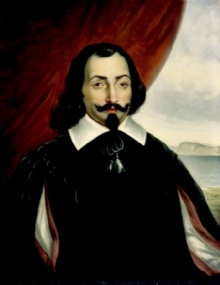Introduction
" Les voyages du Sieur de Champlain" is a travel journal of French explorer Samuel de Champlain, published in 1613. The book explains Champlain's expeditions in modern-day Canada and Northeastern United States, providing readers with firsthand accounts of the area's landscape, native populations, and early European settlements. As the founder of Quebec City and a popular figure in the advancement of New France, Champlain contributed significantly to the history of North America.
The First Voyage: 1603
In his very first expedition, Champlain sailed to North America in the company of François Gravé Du Pont, an experienced explorer. They traveled up the St. Lawrence River, where they came across the Iroquois, Algonquin, and Huron people. Champlain took comprehensive notes on the customs, beliefs, and languages of these indigenous people, fostering serene relationships with the native communities and learning a lot about their way of life. The French explorers likewise met Anadabijou, a Montagnais tribal chief, and they developed a French trading post along the river.
The Second Voyage: 1604-1607
Champlain's second voyage to North America was centered around colonization efforts. Accompanied by Pierre Dugua de Mons, the French group developed a settlement on Saint Croix Island, located between modern-day Maine and New Brunswick. However, the island's harsh winters, minimal resources, and seclusion from indigenous allies led Champlain and his team to transfer the colony to a more suitable area.
In 1605, Champlain cruised south and explored the coastline in search of a brand-new site for the settlement. He took a trip as far as present-day Massachusetts, charting the unexplored territory and documenting geographical features such as the Penobscot River, Narragansett Bay, and Cape Cod. Eventually, the group decided on a new settlement place at Port-Royal in present-day Nova Scotia.
The Third Voyage: 1608
Champlain's 3rd expedition was marked by the starting of Quebec City, one of North America's earliest European settlements. Located on the St. Lawrence River, the settlement quickly ended up being an essential trade center for France. Champlain established alliances with regional Algonquin, Montagnais, and Huron people, exchanging items and knowledge to reinforce New France's development.
During this voyage, Champlain dealt with difficulties as tensions rose among the settlers, causing an attempted mutiny. Champlain managed to maintain order and established a more permanent presence at Quebec City. He also expanded his expedition in the region, taking a trip up the Ottawa and Richelieu Rivers and encountering the effective Iroquois Confederacy.
The Fourth Voyage: 1610-1613
In 1610, Champlain went back to North America, accompanied by his newlywed wife, Hélène Boullé. Settling at Quebec City, they forged alliances between the French and the Huron tribe to counter the risks from the Iroquois. Champlain helped his allies in battling the Iroquois in the Battles of 1609, 1610, and 1615. At the very same time, he continued his expedition and mapping of the area.
During his extensive travels, Champlain created in-depth maps and descriptions of the locations he checked out, including accurate representations of rivers, lakes, and coastal features. These maps were important in establishing European knowledge about North America and affecting future explorers and mapmakers.
Conclusion
" Les voyages du Sieur de Champlain" offers a firsthand account of Samuel de Champlain's four explorations to North America from 1603 to 1613. It offers important insights into the early period of European colonization in the New World, in addition to detailed observations on the native individuals, natural resources, and geopolitics of the area. As a historic document, Champlain's journal works as a testament to his pioneering spirit and sustaining tradition as the "Father of New France."
Les voyages du Sieur de Champlain
A collection of reports, maps, and narratives that detail Samuel de Champlain's explorations and discoveries in French-claimed territory in North America.
Author: Samuel de Champlain
 Samuel de Champlain, Father of New France, and discover his key explorations, quotes, and the legacy he left. Dive into history now!
Samuel de Champlain, Father of New France, and discover his key explorations, quotes, and the legacy he left. Dive into history now!
More about Samuel de Champlain
 Samuel de Champlain, Father of New France, and discover his key explorations, quotes, and the legacy he left. Dive into history now!
Samuel de Champlain, Father of New France, and discover his key explorations, quotes, and the legacy he left. Dive into history now!